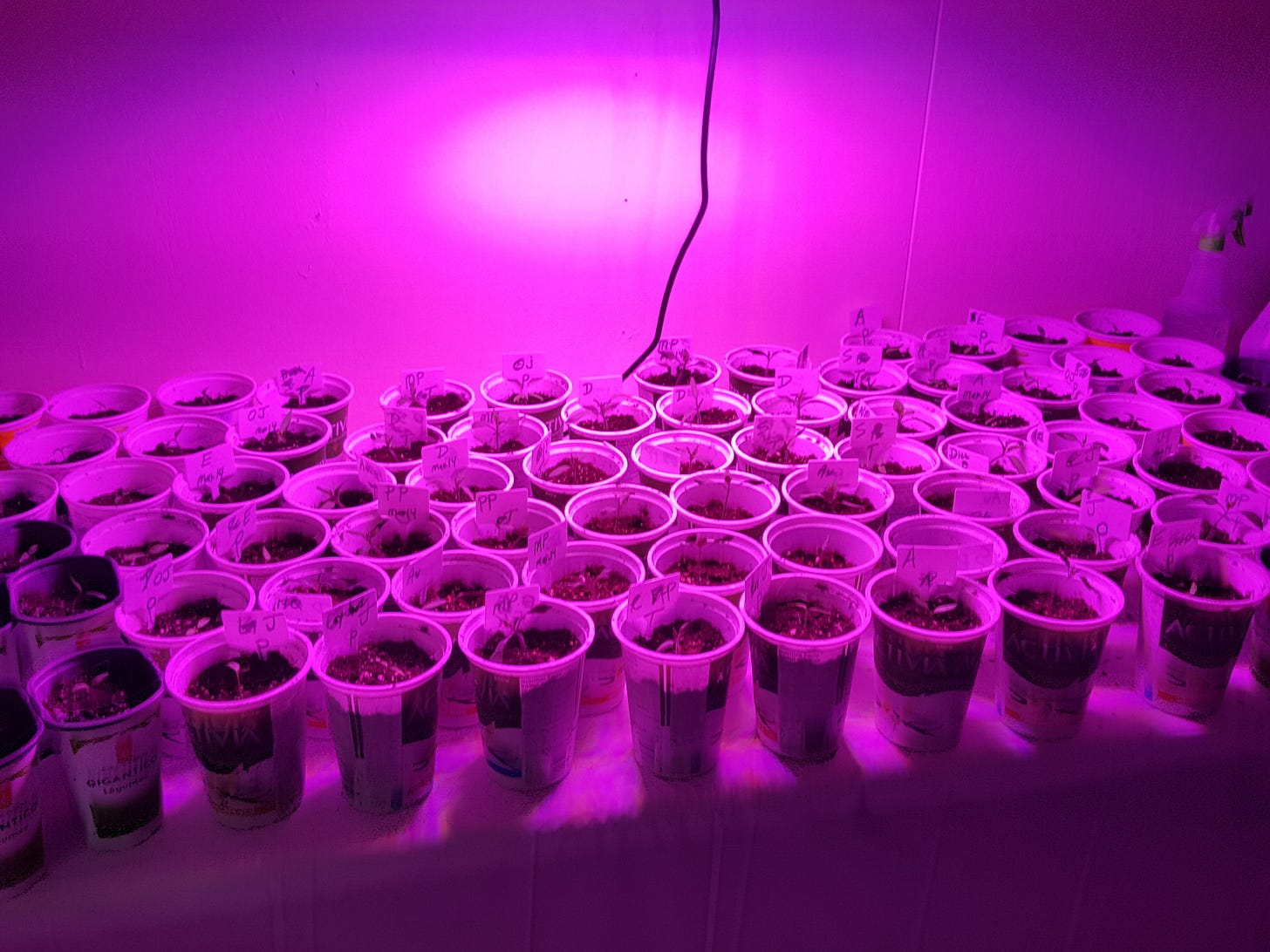Growing Seedlings - Lighting & Air Movement
guide to lighting for growing vegetable seedlings
The number of variables that are involved when you consider lighting seem to be countless. This guide is a super abbreviated effort to provide a few basics to help you along the way.
-it is important to have supplement light when starting vegetable seeds indoors, otherwise the plants will become leggy, with thin stems and lots of space between leaves.
Spectrum and Color Temperature
-Plants use light with wavelengths ranging from 400 (violet) to 700 (red) nanometers. Typically, plants use more blue and blue-green light when they are seedlings
The part of the light spectrum that plants use is called Photosynthetically Active Radiation (PAR) which is composed of primarily red and blue light
-without going into a detailed explanation of Kelvin ratings (also referred to as color temperature), the best Kelvin range for vegetative growth is 5,000 to 7,500 Kelvin.
-seedlings use blue light at the extreme end of the Kelvin scale, ideally at 6500 Kelvin
Lumens
-is a measure of a lights brightness
-seedlings require at light rated at between 2000 to 5000 lumens
Intensity
-a Watt measurement, is the amount of energy needed to power the light.
-a unit of light intensity, reported as PPF (photosynthetic photon flux) or foot-candles (the amount of light received by a 1 sq. ft surface located 1 foot away from a light source is equal to one candle). The PPF of common grow lights ranges from around 10-50, and higher is generally better for seedlings.
Flourescent T5 High Output Lights
-T5 high output grow lights are designed to deliver more lumens per lamp, with high output (HO) lamps emitting between 2,000 and 7,000 lumens and very high output (VHO) lamps producing 7,200 lumens. They use significantly less energy than traditional fluorescent grow lights at 100 lumens per watt and can reduce energy consumption by as much as 50%, depending on what you are growing.
-keep T5 HO lights about 2-3″ above the tops of the leaves to maximize intensity and set on a timer for 16 to 18 hours on each day
LED Lights
-LED lights are long-lasting and more energy efficient than fluorescent T5 HO lights, but also more expensive.
-use special glasses when working in LED lit area. too much blue light has been proven to damage light sensitive cells on the retina
-check owner’s manual for recommendations on coverage area, hanging distance above seedlings, and lighting time
Other:
-any light source should be raised and lowered as your seeds germinate and grow
-seedlings should receive between 16 to 18 hours of light/day
-it is helpful to have a timer you can manually set to turn your lights on and off each day
Air Movement
-introducing air movement across your seedlings by an oscillating fan helps strengthen them for the day when they will be exposed to wind.
-start exposing them to air movement when they develop their first true leaves. Set an oscillating fan on the lowest setting, slowly raising the fan speed as the time to transplant outside gets nearer.


